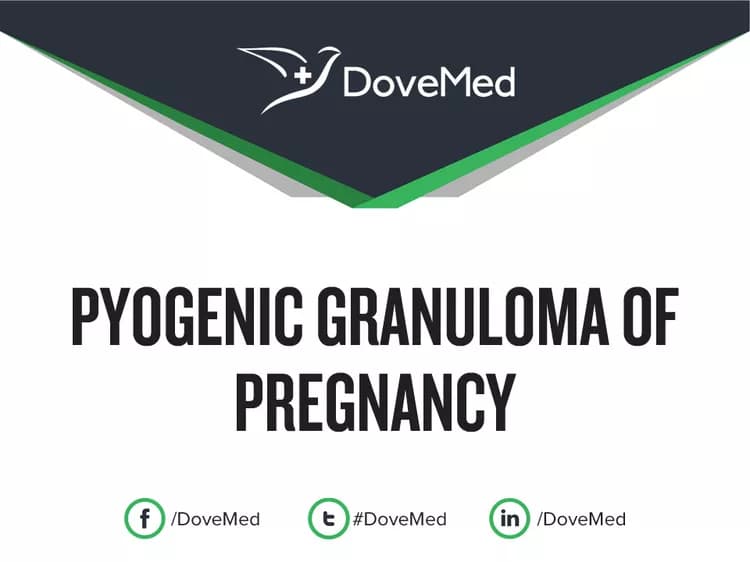What are the other Names for this Condition? (Also known as/Synonyms)
- Epulis during Pregnancy
- Granuloma Gravidarum
- Pregnancy Tumor
What is Pyogenic Granuloma of Pregnancy? (Definition/Background Information)
- Pyogenic Granuloma is a common benign tumor involving the blood vessels observed commonly on the mouth or skin. These tumors may be single or multiple and may grow rapidly
- Pyogenic Granuloma of Pregnancy is a common condition that may occur in pregnant women, mostly after the first trimester. The hormonal changes that take place during pregnancy may be causative. The condition is also known as Pregnancy Tumor
- The treatment of choice is a complete surgical removal through simple excision; the prognosis of Pyogenic Granuloma of Pregnancy is excellent with suitable treatment. However, it may recur in the next pregnancy
Who gets Pyogenic Granuloma of Pregnancy? (Age and Sex Distribution)
- Pyogenic Granuloma of Pregnancy may occur in pregnant women, generally after the 3rd month of pregnancy. The tumor incidence seems to increase, as the pregnancy progresses
- Pyogenic Granuloma of Pregnancy is a common condition. It is believed that nearly 1-5% of all pregnant women may experience the condition
- There is no predilection to any ethnic group or a particular race, it is observed worldwide
What are the Risk Factors for Pyogenic Granuloma of Pregnancy? (Predisposing Factors)
Risk factors for Pyogenic Granuloma of Pregnancy development may include the following:
- Poor oral hygiene
- Gingivitis
- Oral plaques
- Having Pyogenic Granuloma of Pregnancy during a pervious pregnancy
It is important to note that having a risk factor does not mean that one will get the condition. A risk factor increases ones chances of getting a condition compared to an individual without the risk factors. Some risk factors are more important than others.
Also, not having a risk factor does not mean that an individual will not get the condition. It is always important to discuss the effect of risk factors with your healthcare provider.
What are the Causes of Pyogenic Granuloma of Pregnancy? (Etiology)
- The exact cause of Pyogenic Granuloma of Pregnancy formation is unknown
- They are thought to occur as a result of hormonal changes that take place during pregnancy
- These granulomas are not caused by an infection
What are the Signs and Symptoms of Pyogenic Granuloma of Pregnancy?
The signs and symptoms of Pyogenic Granuloma of Pregnancy include:
- They may be present as well-defined, raised, single or multiple nodules; some may be asymptomatic
- Some tumors may grow fast and then stabilize in size; they can become smaller and disappear completely
- Pyogenic Granulomas may range in size from 0.5-2.5 cm; large tumors may be painful
- The most common location of the tumor is the mouth (in the gum-line and lips); they may also appear on any other part of the body, on the skin
- The tumors may ulcerate and ooze or bleed; scratching these tumors may increase bleeding
- Difficulty in chewing or swallowing, when the ulcer is present in the mouth (gums or cheek)
How is Pyogenic Granuloma of Pregnancy Diagnosed?
A diagnosis of Pyogenic Granuloma of Pregnancy is made using the following tools:
- Complete physical examination with a thorough evaluation of medical history
- Dermoscopy: Dermoscopy is a diagnostic tool where a dermatologist examines the skin using a special magnified lens
- A tissue biopsy of the tumor: A tissue biopsy is performed and sent to a laboratory for a pathological examination. A pathologist examines the biopsy under a microscope. After putting together the clinical findings, special studies on tissues (if needed) and with microscope findings, the pathologist arrives at a definitive diagnosis. Examination of the biopsy under a microscope by a pathologist is considered to be the gold standard, in arriving at a conclusive diagnosis
- Differential diagnosis, to eliminate other tumor types are often considered, before arriving at a definitive diagnosis
Many clinical conditions may have similar signs and symptoms. Your healthcare provider may perform additional tests to rule out other clinical conditions to arrive at a definitive diagnosis.
What are the possible Complications of Pyogenic Granuloma of Pregnancy?
The complications from Pyogenic Granuloma of Pregnancy could include:
- Recurrence of the tumor after incomplete surgical removal
- Sometimes, after treatment, multiple small tumors may arise in the region, which are called satellite nodules of Pyogenic Granuloma
- Bleeding and ulceration of the lesions can cause secondary bacterial or fungal infections to develop
- Some pregnant women may feel stressed due to the presence of these tumors, or due to the cosmetic issues they create
How is Pyogenic Granuloma of Pregnancy Treated?
Treatment measures for Pyogenic Granuloma of Pregnancy include the following:
- A simple surgical excision with removal of the entire lesion is the preferred treatment method. If the tumor is not fully removed, then it might recur
- A laser surgery can help reduce scar tissue formation
- Excision through cryosurgery
- If there are secondary infections, then it may be treated with antibacterial and antifungal medications
- Post-operative care is important: A minimum activity level is to be ensured, until the surgical wound heals
- Follow-up care with regular screening and check-ups are important
Note: It has been observed sometimes that these tumors shrink or even disappear completely after pregnancy.
How can Pyogenic Granuloma of Pregnancy be Prevented?
Current medical research has not established a way of preventing Pyogenic Granuloma of Pregnancy occurrence. However, the following may be considered:
- Maintaining good oral and personal hygiene may be helpful, which includes regular brushing and flossing of one’s teeth. One should be particularly careful during pregnancy while brushing teeth - gentle brushing and gentle flossing should be practiced
- Undertake regular checkups with the dentist
- It is important to not pick or scratch the lesions, which can help decrease complications
- Regular medical screening at periodic intervals with blood tests, radiological scans, and physical examinations are mandatory, due to a higher Pyogenic Granuloma recurrence rate after treatment
What is the Prognosis of Pyogenic Granuloma of Pregnancy? (Outcomes/Resolutions)
- The prognosis of Pyogenic Granuloma of Pregnancy is excellent on their complete surgical removal. These tumors are not malignant. Women can breastfeed their children, even if they have this condition
- The probability of Pyogenic Granuloma recurrence is high even on their surgical removal. Hence, a regular follow-up with medical screening should be ensured
- Pyogenic Granulomas may recur during subsequent pregnancies
Additional and Relevant Useful Information for Pyogenic Granuloma of Pregnancy:
The following DoveMed website link is a useful resource for additional information:
Related Articles
Test Your Knowledge
Asked by users
Related Centers
Related Specialties
Related Physicians
Related Procedures
Related Resources
Join DoveHubs
and connect with fellow professionals


0 Comments
Please log in to post a comment.